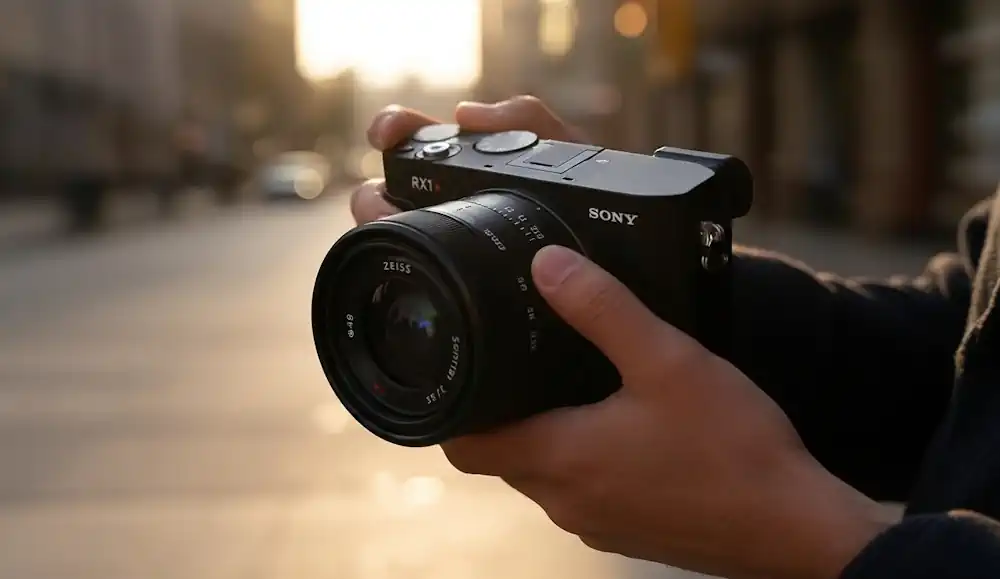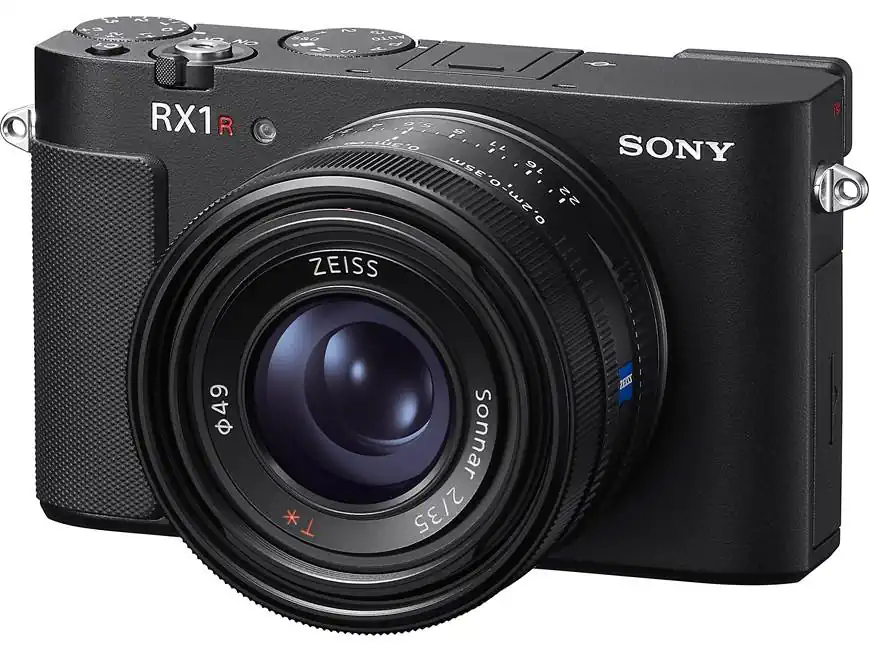Sony is back in the premium compact space with the RX1R III, a pocketable full-frame camera that aims to deliver serious image quality without a heavy kit. It brings modern horsepower to a beloved form factor, targeting creators who want pro results with minimal fuss. The result is a small body that promises big files, fast focus, and a shooting experience built for everyday carry.

A Compact Comeback With Big Ambitions
The RX1 line earned a following by fitting a full-frame sensor into a jacket-pocket camera. The RX1R III continues that idea while updating the core components for 2025. It pairs a 61 megapixel back-illuminated sensor with the BIONZ XR processor and a dedicated AI unit, the same class of tech found in Sony’s higher-end Alpha bodies. This combination is designed to deliver high detail, wide dynamic range, and cleaner high ISO performance.
Autofocus is a major part of the upgrade. The camera uses a dense phase-detect array with real-time subject recognition. It can identify people, animals, and vehicles, then hold focus as they move through the frame. For street, travel, and candid work, that means more keepers and less hunting in challenging light.
Fixed Lens, Focused Purpose
Sony sticks with a fixed ZEISS Sonnar T* 35 mm f/2 lens, a signature choice for this series. The 35 mm focal length is versatile for everyday shooting, and the fast aperture helps keep ISO lower and backgrounds pleasantly blurred. A leaf shutter enables quiet captures and high flash sync speeds, which is handy for portraits on location or discreet street scenes.
There is a macro-friendly close focus down to roughly 20 cm, so small subjects and detail shots are within reach. A step-crop option simulates 50 mm and 70 mm perspectives, useful when you want a tighter field of view without changing your shooting position. The trade-off is resolution, but with 61 megapixels to start, there is room to crop sensibly.
Video and Processing For Hybrid Creators
While stills are the headline, the RX1R III caters to hybrid shooters. It records 4K at up to 60p with 10-bit options, giving editors more latitude for color and exposure adjustments. Creative Looks extend across photo and video, providing consistent color profiles out of the camera. For travel content, behind-the-scenes footage, or short documentary projects, this adds flexibility without a complex rig.
Processing speed also helps the camera keep up with modern workflows. Startup is snappy, menus are responsive, and subject tracking is designed to feel intuitive. The goal is to let the technology assist in the background while you stay focused on timing, framing, and story.
Design Choices That Prioritize Portability
The RX1R III uses a magnesium alloy body to balance durability with low weight. It includes a 2.36 million dot OLED electronic viewfinder and a simple 3.0 inch touchscreen. The interface favors direct control with familiar dials and a comfortable grip texture. Battery life is rated for a day of casual roaming with USB-C power delivery available for top-ups and extended sessions.
To keep the size in check, Sony leaves out in-body image stabilization. Some photographers will miss IBIS for handheld video and low light shooting. Others will prefer the smaller footprint and rely on good technique, the bright lens, and the inherently quiet leaf shutter to get the job done. The design clearly prioritizes compactness and simplicity.
Where It Fits In The Market
This camera targets a specific audience: creators who value full-frame files and premium optics in a minimalist package. It competes with luxury fixed-lens models like the Leica Q series, but approaches the segment with Sony’s autofocus, processing speed, and deep feature set. Street and travel photographers, documentary storytellers, and collectors who appreciate finely tuned tools are the natural fit.
The price reflects that positioning. The RX1R III launches as a premium purchase with features and build quality to match. It is not meant to replace an interchangeable-lens system for every job. Instead, it aims to be the camera you always bring, ready for the moment when light, gesture, and place line up.
Strengths, Trade-Offs, And Practical Tips
Strengths include the high-resolution sensor, fast and intelligent autofocus, the characterful 35 mm f/2 lens, quiet shutter behavior, and strong color handling. The compact form invites spontaneous shooting and encourages you to keep the camera within reach, which often leads to better pictures.
Trade-offs start with the fixed focal length and the absence of IBIS. The EVF resolution is serviceable rather than class-leading, and the rear screen does not articulate. If you lean into what the camera does best – fast reaction, travel-friendly size, and clean files – it becomes a reliable partner. Consider setting custom buttons for AF subject switching, enabling step-crop on a function menu, and carrying a small USB-C battery for long days out.
Why It Matters
The RX1R III signals that compact cameras still have a place alongside phones and larger mirrorless kits. It is a reminder that a dedicated tool can change how you see and shoot. By blending high-end imaging with a small footprint, Sony makes a case for creativity on the go. For many photographers, that combination is the difference between leaving a camera at home and capturing the picture that would have been missed.

